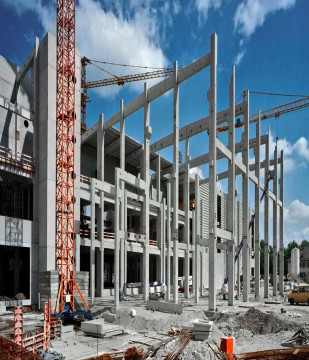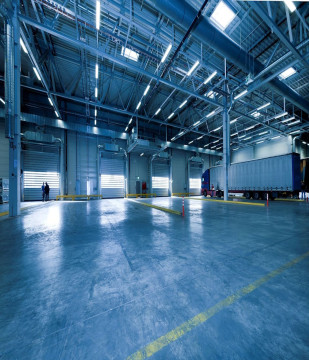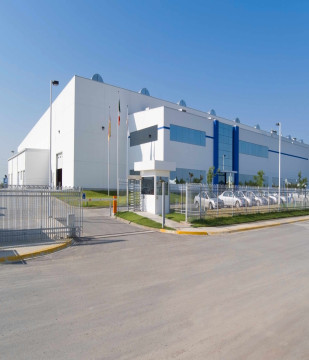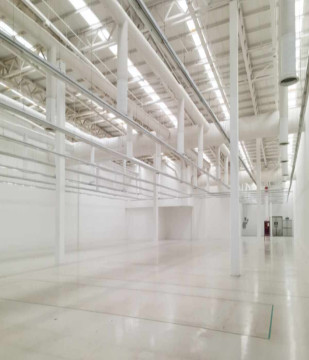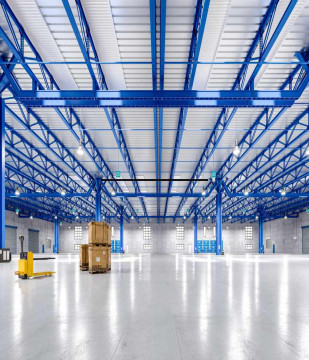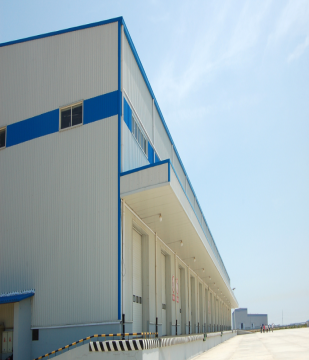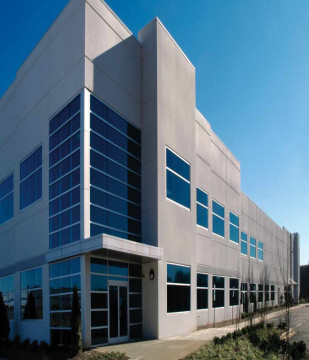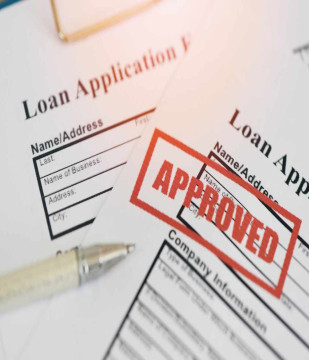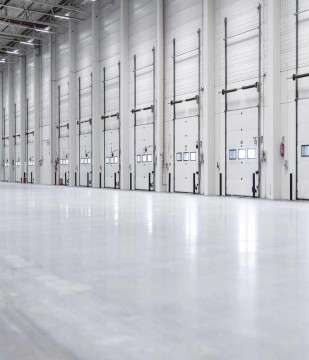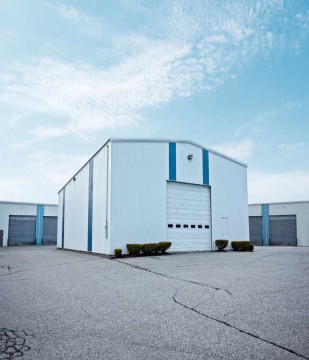Q4 2025 Self‑Storage Loan Rates in Dallas & Texas: Trends and Financing Options

Terrydale Capital
Nov 20, 2025 33 Min read
 Market Updates
Market Updates
The self-storage financing market in Texas especially in the Dallas/Fort Worth area has experienced subtle shifts over the past few months. After peaking earlier in 2025, borrowing costs have shown slight relief as we enter Q4. Investors and brokers focused on self-storage properties are seeing interest rates stabilize or dip slightly across various loan productsterrydalecapital.com. This article provides an up-to-date look at commercial loan rates for self-storage facilities in Dallas and the broader Texas market, covering SBA loans, bridge financing, and bank loans. We’ll highlight current rates, recent trends (from August through November 2025), regional differences, and key loan terms like LTVs, amortization, and prepayment. In the second half, we’ll explore how Terrydale Capital adds value for borrowers in this space through its network, responsiveness, tailored structuring, and robust marketing/CRM platform.
Recent Rate Trends (Aug–Nov 2025) in Texas Self-Storage Financing
In the last quarter, interest rates have begun to ease modestly from their mid-2025 highs. The Federal Reserve’s signal towards an easing stance has translated into slightly lower costs on many commercial loansterrydalecapital.com. For example, the SBA 504 loan 25-year fixed rate fell from about 6.23% in August to 5.86% in November 2025growthcorp.com. Similarly, the prime rate – a benchmark for many business loans – was trimmed from 7.50% in August to 7.00% by early November 2025jpmorganchase.com. These reductions, though incremental, offer some relief to borrowers after the rapid rate run-ups since 2022.
However, it’s important to note that financing remains selective and underwriting is still tightterrydalecapital.com. Lenders are favoring stronger deals and experienced sponsors, and required debt coverage ratios remain high. The good news for Texas investors is that regional lending competition is fierce, keeping certain loans more affordable than in coastal markets. In fact, middle-market regions like Texas and Kansas City often see bridge loan rates about 100 basis points (1%) lower than gateways like California or New Yorkterrydalecapital.com. Dallas–Fort Worth’s robust economy and lender demand mean self-storage projects here can often secure slightly better pricing and terms compared to similar deals on the coasts.
SBA Loans for Self-Storage Facilities
SBA financing (through programs like SBA 7(a) and SBA 504) continues to be a compelling option for self-storage acquisitions and development. These government-backed loans are designed for small businesses and offer some of the most favorable terms available, especially for owner-operators of self-storage facilities:
Interest Rates: SBA 7(a) loans are typically variable-rate, often pegged to the Prime Rate. With Prime at 7.00% as of Nov 2025, SBA 7(a) loan rates currently range roughly from 10% up to 11–12% (with the exact rate depending on loan size and lender margins)lendio.com. SBA 504 loans, on the other hand, have a portion fixed by an SBA debenture; the 25-year SBA 504 rate is about 5.86% as of November 2025growthcorp.com (down from ~6.2% in August). Keep in mind a full SBA 504 financing package involves a first mortgage from a bank (typically at market rates in the 6% range) and a second mortgage via the SBA debenture (the 5.86% portion), producing a blended rate often in the high-5% to low-6% range.
Leverage (LTV) and Amortization: A major attraction of SBA loans is high leverage – up to 90% loan-to-cost financing is possibleselectcommercial.com. That means only ~10% down payment, which is significantly lower equity upfront than most bank loans require. SBA 7(a) loans commonly offer 25-year amortization (fully amortizing with no balloon), spreading payments out for manageable cash flow. SBA 504 loans also effectively provide 25-year terms (the SBA second is 25-year fixed, and the accompanying bank loan can often be 20–25 year amortization). This extended amortization helps maximize cash flow for self-storage projects, which is valuable for both first-time buyers and seasoned investors.
Loan Structure and Fees: SBA loans do have some fees (SBA guaranty fees) and prepayment penalties to consider. For example, SBA 7(a) loans with terms of 15+ years carry a prepay penalty (5% in year 1, 3% in year 2, 1% in year 3, and none thereafter). SBA 504 debentures also have a roughly 10-year declining prepayment schedule. Borrowers should plan to hold these loans for a few years or be prepared for those penalties if refinancing early. Despite this, the benefits of lower down payments and flexible underwriting often outweigh the downsides. SBA lenders will often lend based on projected income (for new facilities or expansions) and can be more flexible on credit metrics because the loans are government-guaranteedselectcommercial.com. This makes SBA financing a popular choice to fund ground-up self-storage developments or acquisitions of existing facilities, especially for owner-operators.
Recent trend: SBA rates have slightly improved in the past 3 months thanks to the interest rate easing. The SBA 504 effective rate dropping to 5.86% in Nov from over 6% in the summer is a concrete examplegrowthcorp.com. This means new SBA 504 borrowers in Q4 2025 are locking in fixed rates under 6% – a welcome development after the volatility of the past two years. SBA 7(a) rates, being variable, will follow Prime down; the quarter-point Fed rate cuts in September and October 2025 have reduced Prime to 7%, trimming many 7(a) loan rates into the single digits for well-qualified borrowers. In short, SBA loans remain one of the most attractive financing routes for self-storage due to their combination of high leverage, long terms, and now a slightly easing rate environment.
Bridge Loans: Short-Term Financing in the Current Market
When a self-storage deal requires quick, interim financing – such as acquiring a value-add facility or funding a lease-up and renovation – bridge loans are often the tool of choice. These loans come from debt funds or private lenders and are designed to be short-term “bridges” until an asset is stabilized or a permanent refinance is in place. Key characteristics of bridge loans in late 2025 include:
Interest Rates: Bridge financing is significantly more expensive than permanent loans due to higher risk and short duration. As of Q4 2025, most commercial bridge loan rates fall between about 9% and 12%terrydalecapital.comrtibridgeloans.com. This range has remained elevated throughout 2025 as lenders price in economic uncertainty. That said, Texas borrowers often see the lower end of this range. Markets like Dallas benefit from strong competition among private lenders, meaning bridge loans in Texas can be roughly 100 bps (1%) cheaper than in coastal marketsterrydalecapital.com. For example, a Dallas self-storage acquisition might secure a bridge loan around 9–10% interest, whereas a comparable deal in California could be 10–11%. This regional discount is a strategic advantage for Texas investors seeking transitional capital.
Terms and Structure: Bridge loans are typically interest-only (no principal amortization during the term) which helps keep monthly payments lower despite the higher rate. Terms are short – often 12 to 36 months in length, with options to extend for a fee. They are designed to be paid off by either refinancing into a cheaper permanent loan or selling the property after the business plan is executed. Prepayment flexibility is a hallmark of bridge debt: many have no hefty prepayment penalty beyond a minimum interest period (for instance, a 6–12 month minimum interest clause). This means if you improve the self-storage facility’s income and want to refinance out early, you generally can do so without the kind of defeasance or yield maintenance costs that come with CMBS or long-term loanslistselfstorage.com. In short, bridge loans trade off higher interest for agility – you can pay them off as soon as the project is ready for permanent financing.
Leverage: Bridge lenders are often willing to be more aggressive on leverage than banks. It’s common to see loan-to-value ratios of 75%–80% on bridge loanslistselfstorage.com, and in some cases even higher (debt funds sometimes stretch leverage with mezzanine pieces or preferred equity). This higher leverage, combined with interest reserves and funds for capital improvements, makes bridge financing ideal for value-add or turnaround scenarioslistselfstorage.comlistselfstorage.com. For a self-storage property that has expansion potential or needs lease-up, a bridge loan can provide construction dollars or cover operating shortfalls until occupancy rises. Most bridge loans are also non-recourse (no personal guarantee) aside from fraud provisions, which is appealing to investors who want to limit personal liability.
Recent trend: Bridge loan rates have stayed flat to slightly down in late 2025. While base index rates (like SOFR) have edged down with Fed signals, lenders have maintained relatively wide credit spreads due to cautious sentiment. The result is that bridge rates are still hovering near 10% on average. We haven’t seen meaningful drops in bridge pricing over the last 3 months, but borrowers can hope for some relief if the Fed continues to cut rates in 2026. In the meantime, Texas remains a favorable arena for bridge financing, with ample local capital chasing deals and thereby keeping pricing competitive. Borrowers should still underwrite conservatively with these higher interest costs, but know that bridge debt is available and active for solid self-storage projects – especially those with a clear exit strategy to a bank or SBA takeout loan once stabilized.
Bank and Conventional Loans for Self-Storage
Traditional bank loans (from regional and community banks or credit unions) are a mainstay for financing stabilized self-storage properties. In the current market, bank lenders in Texas are active but cautious, offering moderate rates and conservative terms. Here’s what investors can expect from conventional bank financing:
Interest Rates: Banks are generally offering the lowest interest rates among the major loan types (aside from agency loans which mostly apply to multifamily). In Texas, local banks are quoting around the mid-5% to mid-6% range for stable self-storage deals as of late 2025. For example, recent commercial loan data in Texas showed bank rates roughly 5.8%–6.2% for solid propertiesterrydalecapital.com. This aligns with other industry indications – one commercial brokerage noted five-year fixed self-storage loan rates around 6.1%–6.5% in Nov 2025selectcommercial.com. The slight dip in Treasury yields and swap rates over the fall has started to trickle into marginally lower fixed rates at banks. Still, expect interest rates in the 6% ballpark for a typical self-storage permanent loan from a bank in Dallas. These loans often reset after the fixed period, so a 5-year or 7-year fixed at ~6% now might adjust later if not refinanced.
LTV and Terms: Leverage offered by banks is a bit more restrained – typically 60%–75% LTV on self-storage, depending on cash flow. Many Texas banks prefer around 70% LTV maximum, meaning a 30% equity down payment (though some deals with strong guarantors and cash flow can push 75% LTV)selectcommercial.com. Banks also require robust debt coverage (usually a DSCR of 1.25x or higher on stabilized cash flow). Amortization is normally 20–25 years, with a term of 5, 7, or 10 years before a balloon or rate reset. For instance, a common structure is a 5-year fixed rate loan, 25-year amortization, with a balloon at year 5 (or an option to reset rate). This means lower monthly payments than a 15-year amort, but you’ll need to refinance or pay off the loan at maturity if not extended. Some Texas banks and credit unions also offer 15-year fixed loans with 15-year amortization for smaller deals, but the monthly payments are higher. Overall, expect to hold a bank loan for 5-10 years before needing to refinance, with the loan gradually amortizing in the meantime.
Prepayment and Recourse: Compared to other capital sources, banks often provide more flexible prepayment terms. Many bank loans allow prepayment with either no penalty or a small step-down fee (for example, 3% in year 1, 2% in year 2, 1% in year 3, then no penalty). Others might have a modest fixed charge or require yield maintenance only in the fixed-rate period. This is much easier to manage than, say, a CMBS loan which could require defeasance. On the flip side, banks almost always require recourse to the borrower (personal guarantees from the owners)listselfstorage.com, especially for single-asset loans like self-storage. This means the principals are personally on the hook if the loan defaults (unlike non-recourse CMBS or many bridge loans). Strong borrowers in Texas often accept this, given it comes with the benefit of lower rates and a relationship with the bank for future business. It’s worth noting that banks in Texas heavily value relationships – they may offer slightly better terms if you move deposits or other business to them, and they aim for repeat businesslistselfstorage.com.
Recent trend: Bank lending for self-storage has been cautious but steady in late 2025. The slight decrease in benchmark rates has allowed some Texas banks to knock a few basis points off their loan rates since Q3, but they are compensating by tightening credit (lower LTVs or higher DSCR requirements in some cases). Loan terms like 65% LTV, 1.25x DSCR, ~6% rate are fairly typical on a quality Dallas self-storage assetterrydalecapital.com. Regional differences aren’t huge in bank lending since many banks price off similar indices, but Texas does have a healthy community bank sector with plenty of lenders competing for business – this helps keep rates competitive. Overall, for stabilized properties with good occupancy and income, a bank loan in the current climate offers the best combination of rate and term length. Borrowers just need to be prepared to sign recourse and possibly provide global financials to satisfy the bank’s underwriting.
Summary of Self-Storage Loan Options (Avg. Rates & Terms, Nov 2025)
To recap the key differences, below is a summary table of average interest rates and typical terms for self-storage loans in Texas as of November 2025:
| Loan Type | Interest Rates (Q4 2025) | Max LTV | Term & Amortization | Prepayment |
|---|---|---|---|---|
| SBA Loans 7(a) or 504 | 7(a): ~10% (variable) 504: ~5.9% fixed (SBA portion)growthcorp.comlendio.com | Up to 90%selectcommercial.com | 25-year amortization (7a: fully amortizing; 504: 20–25yr bank + 25yr SBA) | Yes – declining penalty (e.g. 7a: 5-3-1% in years 1-3)selectcommercial.com |
| Bridge Loans Private/Debt Fund | ~9% – 12% (interest-only)terrydalecapital.com Texas tends toward lower endterrydalecapital.com | ~75% – 80%listselfstorage.com | 1–3 year term, interest-only (extensions often available) | Minimal – often 12-month minimum interest then open prepaylistselfstorage.com |
| Bank Loans Conventional | ~6% (5.5%–6.5% typical)terrydalecapital.comselectcommercial.com | ~65% – 75%selectcommercial.com | 5–10 year term (fixed) 20–25 year amortization | Moderate – e.g. 3-2-1% step-down or none after 3–5 yearslistselfstorage.com |
Note: Rates are indicative averages for November 2025 in the Texas market. Actual quotes depend on deal specifics and borrower qualifications. LTV = Loan-to-Value. SBA 504 loans consist of two loans (bank and SBA debenture) – the rate shown is for the SBA portion; the bank portion may be around 6–7%, resulting in a blended rate in low-6% range. All SBA loans require personal guarantees; bank loans are usually recourse; bridge loans are generally non-recourse.
How Terrydale Capital Adds Value for Self-Storage Borrowers
Securing the best financing in today’s market requires not just shopping rates, but having the right partner to navigate the process. This is where Terrydale Capital stands out for self-storage investors and brokers in Texas. As a commercial mortgage broker and advisory firm, Terrydale Capital brings together deep market knowledge, a wide network of lenders, and a highly responsive team to deliver an exceptional borrowing experience. Here’s how Terrydale adds value in the self-storage financing space:
Extensive Lender & Broker Network: Terrydale leverages a broad relationship network to source the optimal loan for each client’s needs. The firm continuously cultivates contacts with a variety of lenders – from local banks and credit unions to national debt funds and SBA lenders – and keeps detailed, up-to-date information on their programs in its database. Terrydale’s marketing team actively finds new lending partners and builds connections with commercial real estate brokers across the region. For borrowers, this network means more options and better terms. Terrydale can quickly identify which lenders are most competitive for a Dallas self-storage deal (whether it’s a bridge loan or a long-term loan) and even tap into niche lenders that an investor might not find on their own. With strong lender relationships in place, Terrydale often negotiates preferential rates or higher leverage on behalf of its clients.
Responsive, High-Touch Service: In a fast-moving investment scenario, responsiveness is crucial – and Terrydale prides itself on speed and communication. The team ensures that every new loan inquiry or lead is addressed promptly: internal protocols call for a loan officer to reach out to a prospective borrower within 2 hours of an inquiry. Throughout the loan process, Terrydale coordinates communication among all parties, keeping the client and brokers in the loop. Borrowers can expect proactive follow-ups (at least weekly) and quick turnarounds on questions or issues. This high-touch approach means deals stay on track and opportunities aren’t lost due to slow response. Terrydale essentially acts as an extension of your team, shepherding the transaction from initial quote to closing. For busy investors and brokers, having a diligent partner managing the process provides peace of mind and often a faster closing timeline.
Tailored Capital Structuring: No two self-storage deals are identical, so Terrydale emphasizes customizing the capital stack for each transaction. Their advisors take the time to understand the borrower’s strategy (e.g. short-term flip vs. long-term hold, value-add vs. stabilized) and then structure financing that best achieves those goals. This could mean blending loan products – for instance, arranging a bridge-to-SBA takeout, or pairing a bank loan with a mezzanine piece for extra leverage. Because Terrydale works with all lender types (agency, bank, debt fund, life company, etc.), they can compare multiple loan options side-by-sideterrydalecapital.com. The firm’s goal is to secure optimal terms across all commercial loan classes for its clientsterrydalecapital.com. In practice, this might involve negotiating for a longer interest-only period to ease cash flow during a lease-up, or finding a lender who will underwrite pro forma income on a self-storage expansion. Terrydale’s experience with structuring means borrowers get a financing solution tailored to their business plan – not a one-size-fits-all loan.
Robust Marketing & CRM Platform: Behind Terrydale Capital’s client service is a sophisticated marketing and technology infrastructure that benefits borrowers. The firm runs an in-house marketing department that drives a steady pipeline of opportunities through SEO-optimized content, social media outreach, email newsletters and more. This active marketing ensures Terrydale has its finger on the pulse of the market and a constant influx of fresh capital sources and deals. Moreover, Terrydale has developed a proprietary CRM and deal-tracking system – including the Terrydale Live platform – which tracks live loan quotes, lender appetites, and deal metrics in real timeterrydalecapital.com. The team diligently updates this system with recent quotes and lender program changes. For clients, Terrydale Live offers unparalleled transparency: borrowers can benchmark current rates by region and asset, and see which lenders are active – a feature almost unheard of at the traditional brokerage levelterrydalecapital.com. Internally, the CRM helps Terrydale match borrowers with the right lenders instantly and keep the loan process organized. The firm also has automated workflows (for example, immediate lead assignment and email introductions) that ensure no borrower inquiry falls through the cracks. This blend of marketing prowess and tech-enabled execution means Terrydale clients get both a personal touch and the efficiencies of an advanced platform.
By combining these strengths – a wide network, responsive service, tailored solutions, and a data-driven platform – Terrydale Capital elevates the financing experience for self-storage investors. Borrowers in Dallas and across Texas who partner with Terrydale gain not only access to competitive loan options, but also a trusted advisor in their corner. In a lending climate that is constantly evolving, Terrydale’s connectivity and proactive approach help clients navigate challenges and secure the capital they need, whether it’s a low-rate SBA package or a quick-close bridge loan.
Bottom Line: The past three months have shown encouraging signs for self-storage financing, with interest rates inching down and lenders remaining actively engaged in the Texas market. Whether you’re looking at an SBA-backed loan for a new facility, a bridge loan to reposition a property, or a bank loan to refinance a stabilized asset, staying informed on current rates and terms is crucial. Equally important is having a capable finance partner. Terrydale Capital’s expert team and robust lender network position it uniquely to add value – by finding the best deals, smoothing the loan process, and ultimately helping investors and brokers in Dallas achieve their self-storage investment goals.
Partner With Terrydale Capital for Your Debt Financing Needs
When it comes to debt financing, understanding the right timing, process, and options is crucial. At Terrydale Capital, we provide a comprehensive range of commercial loan solutions tailored to meet your business's unique needs.
